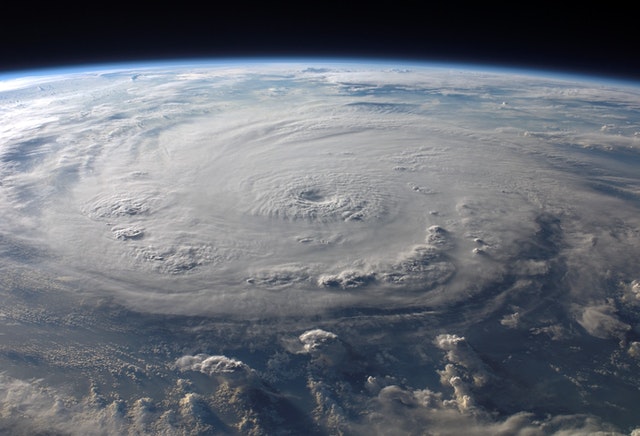
Once a hurricane is going your way, there’s no way to stop it. You cannot prevent a hurricane, short of living somewhere hurricane-free. During hurricane season, it is crucial to stay prepared. Planning for a hurricane can be stressful, especially if it’s on short notice. Today, we’ll be informing you of the essential things you need to prepare for a hurricane.
Start Planning Now
Hurricane season in the Caribbean-Atlantic area officially begins on May 15 and ends by November 30. It may be several months before hurricane season starts again, but being prepared now saves you a lot of stress later. Make sure to have emergency numbers saved on your phone or posted on the fridge. Check your emergency supply kit if it’s fully stocked.
Keep a close eye on offshore weather reports for hurricane activity in your free time. This should be a part of your routine if you live in a hurricane-prone area. Map out the quickest route to your area’s hurricane shelters. Alternatively, if you have a hurricane shelter, make sure it is properly stocked with supplies.
Pack the Essentials
You should have tiers of essential items. This means you should have a primary tier (essential for survival) and a second-tier (sentimental items). For your primary tier, make sure it is already packed in a duffel bag. Primary essentials should include:
- Emergency food and water
- Basic First Aid Manual
- Plasters and Bandages (clean)
- Clean Cloth
- Tweezers
- Sterile Gloves
- Tweezers
- Scissors
- Alcohol
- Sticky Tape
- Safety Pins
- Digital Thermometer
- Rash Ointment
- Bug Spray
- Painkillers
- Antihistamine tablets
- Distilled Water for Wounds
- Extra set of clothes
- Solar Charger
- Powerbank
- Flashlight (with extra batteries)
- Documentation (IDs, Passports, Wills, etc)
- Portable Fire Extinguisher
This may seem like a lot, but it’s all things that can fit in a duffel bag. Make sure these things are stocked and ready in case of emergency.
The secondary tier should be sentimental items such as pictures, keepsakes, and jewelry. Do not attempt to rescue any heavy appliances such as TVs or microwaves. Those will only slow you down and could even cause accidents.
Understand Weather Forecasts
When listening for service alerts, keep track of how far the hurricane is and what areas have been ravaged. There are only two types of alerts you should look for: a hurricane watch and a hurricane warning.
A hurricane watch means a hurricane is “possible”. In such cases, make sure your emergency duffel bag is prepped and ready, but don’t start leaving the house yet. If they announce a hurricane warning, start hurricane-proofing your home so the damage is minimized before you leave.
Ready your Transportation
If you live in a hurricane-prone area, it is highly recommended for you to own some form of transportation.
If you live alone, but do not have a car, consider getting a bike. It’s important to be able to move around in case you need to leave in a hurry. For those with vehicles, ensure that your car has a full tank. Here are things you should have in your trunk in case of an emergency:
- Sand (for emergency traction)
- Jumper Cables
- Local Map
- Flares
- Reflection Triangle
- Blanket and Pillows
- Car phone charger
- Ice Scraper
- Spare Tires
- Spare Gas Canisters
- Gallon Bottles of Drinking Water
- Spare Rations
In addition, have a mechanic check your car for any issues at least once every other month. Car trouble during an emergency would be a nightmare. Ensure your tires are ready for rough terrain. On the road, avoid flooded areas.
Do not risk going through a flooded area under any circumstances. In case a power line falls on your car, call the authorities and do not attempt to get out unless there’s a danger of explosion. Do not touch the metal frame of the car.
Ensure your Family and Pets are Accounted For
If you have any severely disabled family members or pets, make sure you have ways of getting them out fast in case of an emergency. For wheelchair-bound relatives, ensure that you have the wheelchair always at the ready for a quick escape.
If any of your relatives have medical conditions, make sure anything they need is present in your emergency duffel bag. For pets, calm them down if the storm is already near. Make sure they are on a leash. Leave your pet in a local pet shelter if possible.
Hurricane-proof your Home
Since this will most definitely be on short notice, here are the things you can do to minimize the dangers of a hurricane when it reaches your home.
- Clear out your immediate area of dangers such as gardening equipment, glass, metal, and any other solid material. Put them inside your home or into a sealed trash can.
- Fill up gallon bottles with water in case you need to stay inside your home.
- Turn off your power in case you need to leave your home. Do this also if your house has flooded or power lines have fallen around your home.
- Cover up windows with planks of wood or storm shutters. Nail it down. This prevents any debris from penetrating your home.
Conclusion
Once you have all of your hurricane preparations in order, all that’s left to do is wait. Listen to weather forecasts and follow your local authority’s orders.
If they tell you to evacuate, don’t hesitate. Leave immediately. Your home is important, but the people who live in it are much more important.
Once you leave, grab your emergency duffel bag, turn off all of your utilities, unplug any electronics, and start your vehicle. Call the local authorities to know where the nearest refugee center is.
In case you are staying at home, keep your doors and windows closed. Stay tuned for weather updates, and be ready to leave at a moment’s notice.



